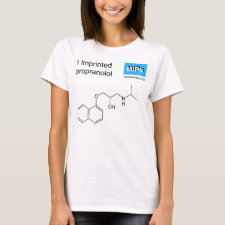
Authors: Nagy-Szakolczai A, Sváb-Kovács A, Krezinger A, Tóth B, Nyulászi L, Horvai G
Article Title: The molecular imprinting effect of propranolol and dibenzylamine as model templates: Binding strength and selectivity.
Publication date: 2020
Journal: Analytica Chimica Acta
Volume: 1125
Page numbers: 258-266.
DOI: 10.1016/j.aca.2020.05.066
Alternative URL: https://www.sciencedirect.com/science/article/pii/S0003267020306243
Abstract: Recent studies have shown anomalies with the most studied non-covalent molecularly imprinted polymer, the propranolol imprinted one. This imprinted polymer, like many others, binds more template than the non-imprinted control polymer, but its selectivity in template adsorption is only slightly or not at all improved by imprinting, depending on the compound compared. The reasons for this anomaly are discovered here. Simple experiments show that acid homoassociation in the prepolymerisation complex is the likely cause of the anomaly. The specific conductivity of prepolymerization mixtures at different functional monomer to template ratios follows a pattern observed in homoassociating systems. Analysis of the optimal prepolymerization mixture shows that on average two molecules of the functional monomer are complexed to the basic template, even if the template lacks any other hydrogen bonding functional group than the amino group. Molecular modeling calculations provide the structure and stability of the homoassociated prepolymerization complexes. These results lead to a plausible interpretation of the anomaly, which may not be unique for the propranolol imprinted polymer, but may affect all imprinted polymers made for basic templates by using acidic functional monomers. The analytical applications of the new imprinting model are demonstrated
Template and target information: propranolol, dibenzylamine
Author keywords: molecular imprinting, Binding site, Acid-base, selectivity, beta blocker, propranolol



Join the Society for Molecular Imprinting

New items RSS feed
Sign-up for e-mail updates:
Choose between receiving an occasional newsletter or more frequent e-mail alerts.
Click here to go to the sign-up page.
Is your name elemental or peptidic? Enter your name and find out by clicking either of the buttons below!
Other products you may like:
 MIPdatabase
MIPdatabase









